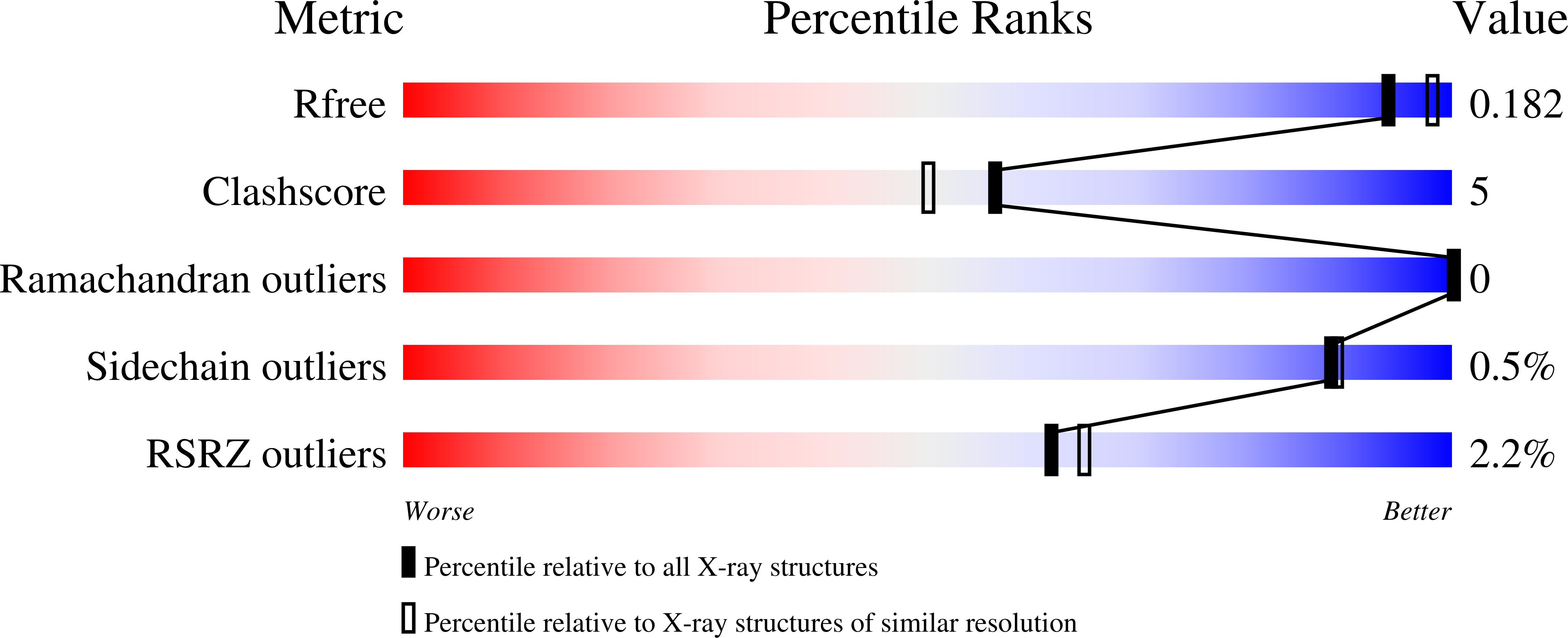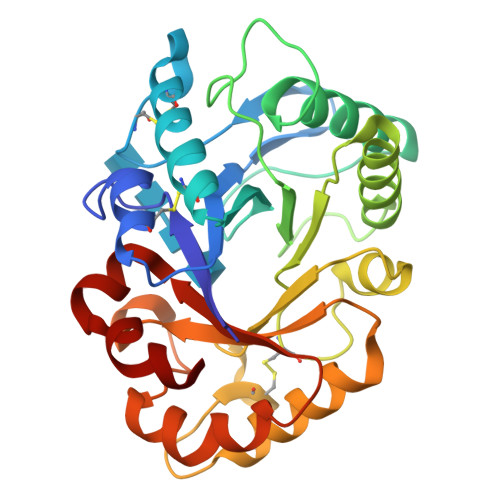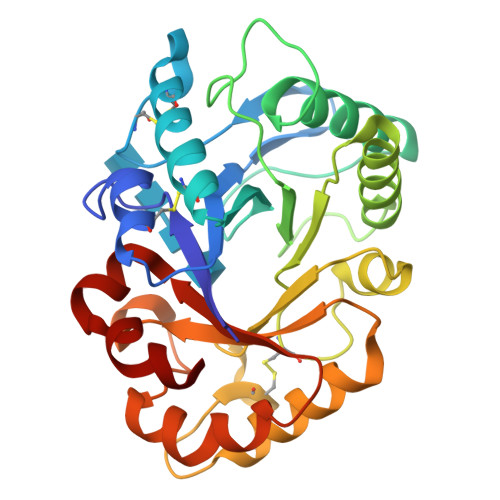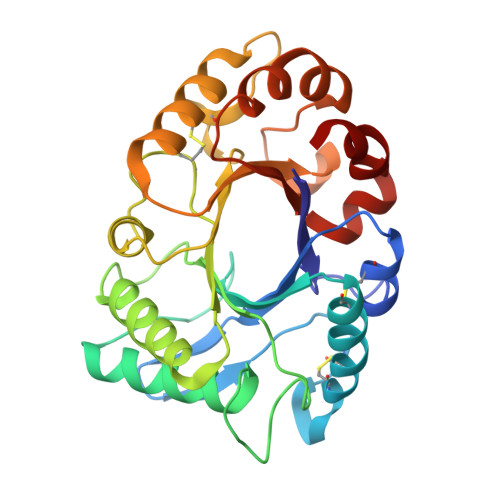Expression and Characterization of Active Site Mutants of Hevamine, a Chitinase from the Rubber Tree Hevea brasiliensis.
Bokma, E., Rozeboom, H.J., Sibbald, M., Dijkstra, B.W., Beintema, J.J.(2002) Eur J Biochem 269: 893-901
- PubMed: 11846790
- DOI: https://doi.org/10.1046/j.0014-2956.2001.02721.x
- Primary Citation of Related Structures:
1KQY, 1KQZ, 1KR0, 1KR1 - PubMed Abstract:
Hevamine is a chitinase from the rubber tree Hevea brasiliensis. Its active site contains Asp125, Glu127, and Tyr183, which interact with the -1 sugar residue of the substrate. To investigate their role in catalysis, we have successfully expressed wild-type enzyme and mutants of these residues as inclusion bodies in Escherichia coli. After refolding and purification they were characterized by both structural and enzyme kinetic studies. Mutation of Tyr183 to phenylalanine produced an enzyme with a lower k(cat) and a slightly higher K(m) than the wild-type enzyme. Mutating Asp125 and Glu127 to alanine gave mutants with approximately 2% residual activity. In contrast, the Asp125Asn mutant retained substantial activity, with an approximately twofold lower k(cat) and an approximately twofold higher K(m) than the wild-type enzyme. More interestingly, it showed activity to higher pH values than the other variants. The X-ray structure of the Asp125Ala/Glu127Ala double mutant soaked with chitotetraose shows that, compared with wild-type hevamine, the carbonyl oxygen atom of the N-acetyl group of the -1 sugar residue has rotated away from the C1 atom of that residue. The combined structural and kinetic data show that Asp125 and Tyr183 contribute to catalysis by positioning the carbonyl oxygen of the N-acetyl group near to the C1 atom. This allows the stabilization of a positively charged transient intermediate, in agreement with a previous proposal that the enzyme makes use of substrate-assisted catalysis.
Organizational Affiliation:
Department of Biochemistry, Rijksuniversiteit Groningen, The Netherlands. eb272@mole.bio.cam.ac.uk

















